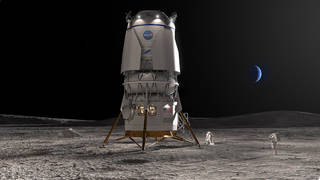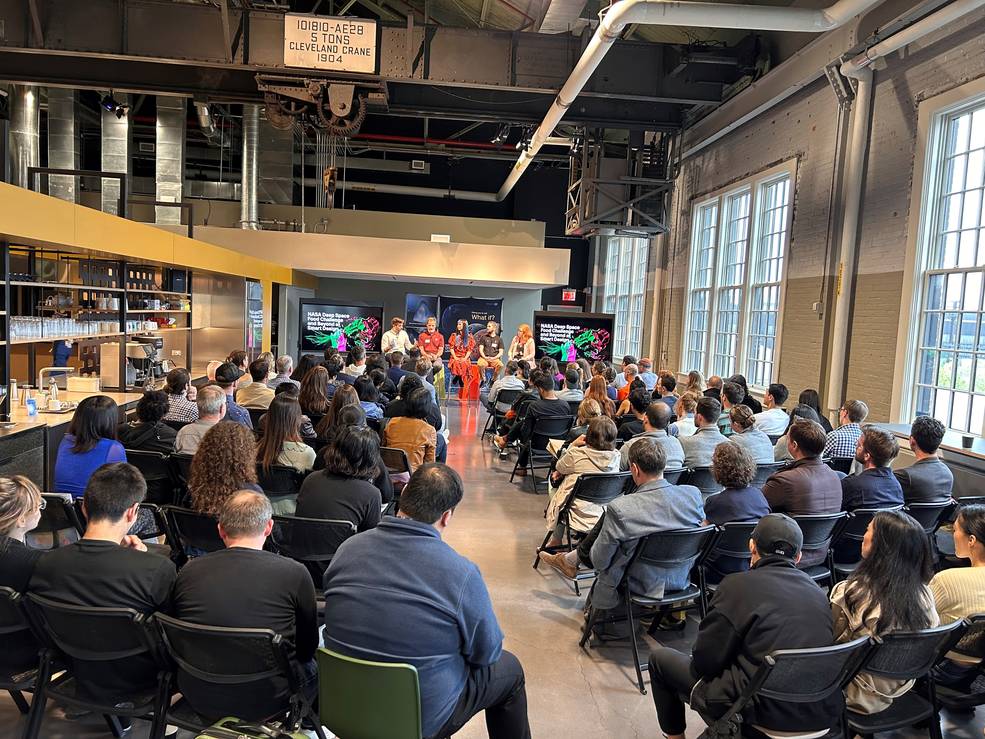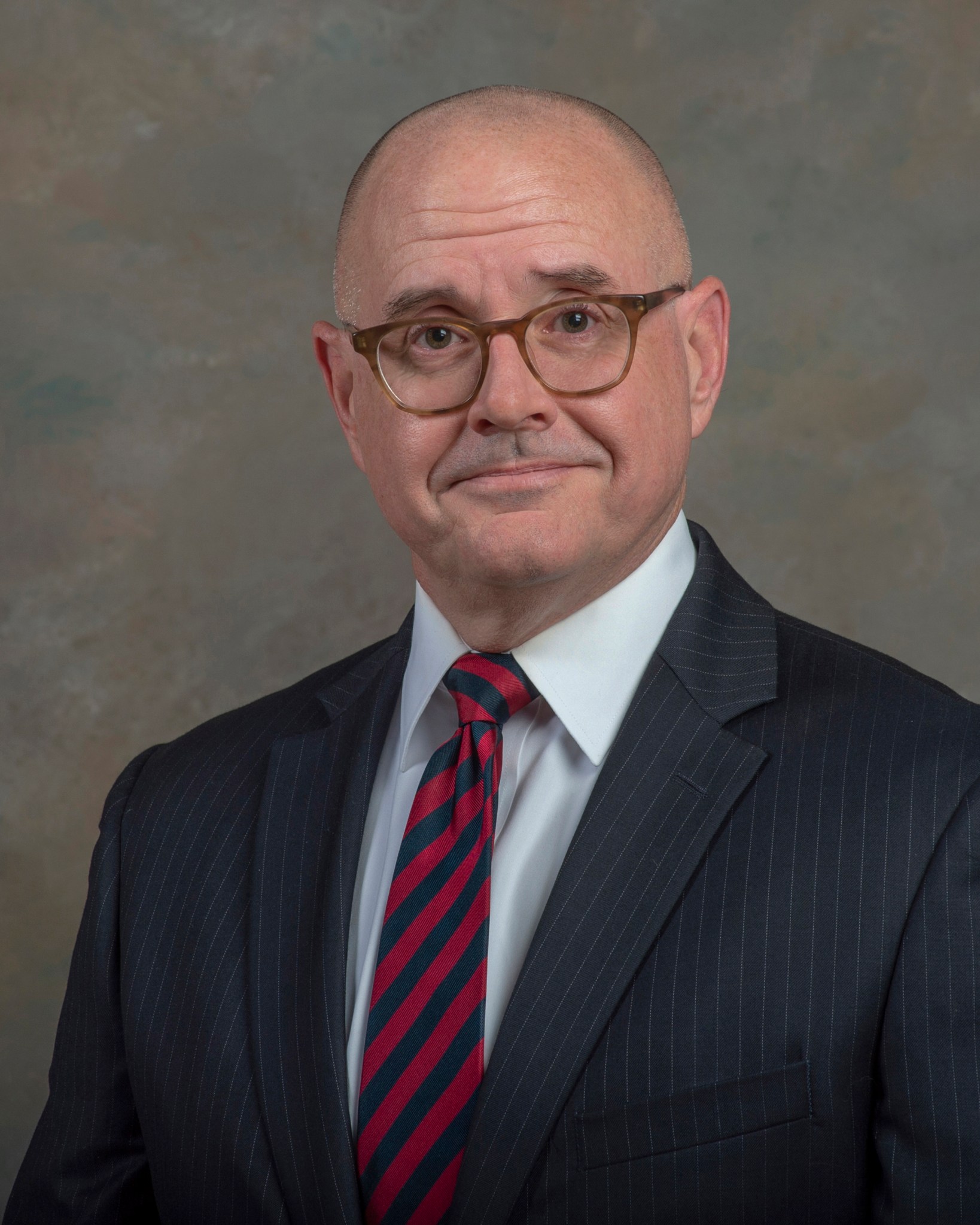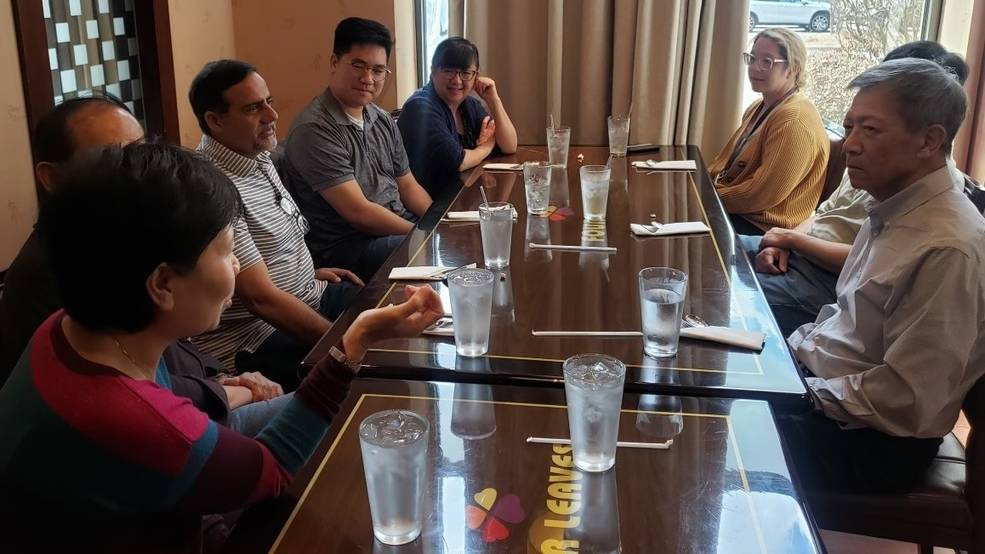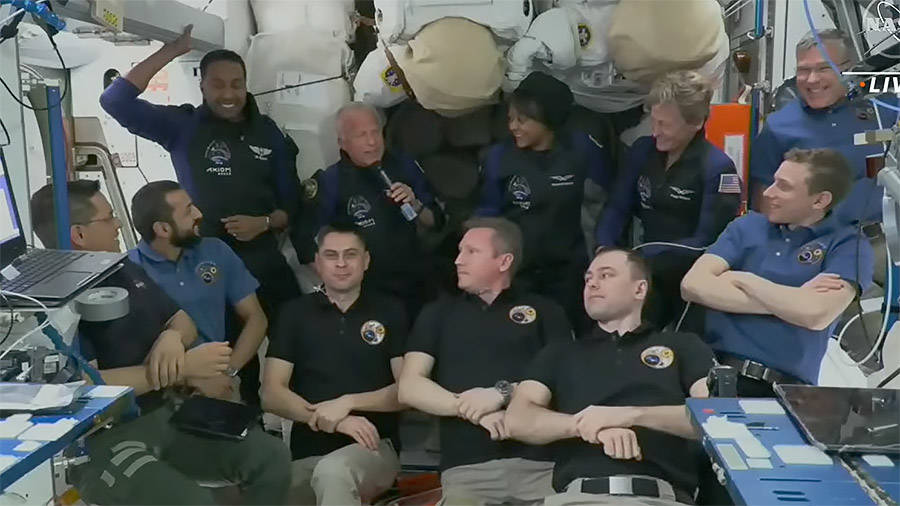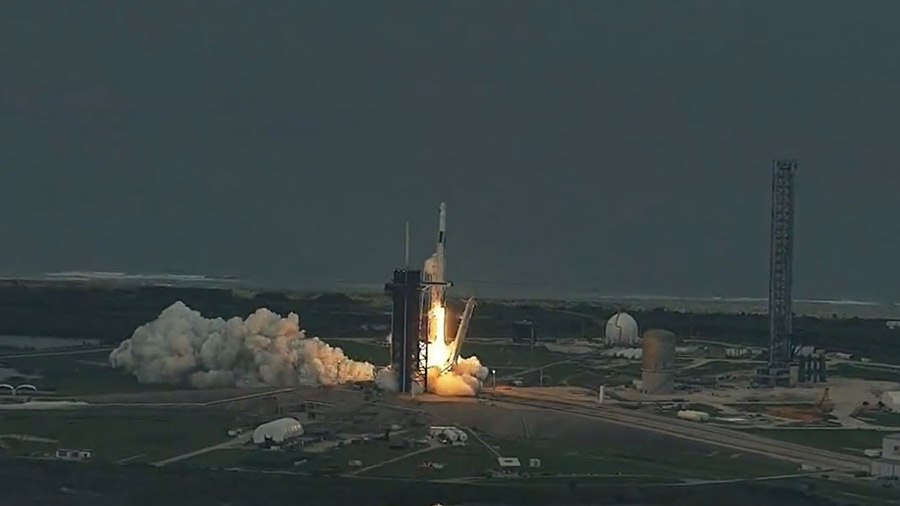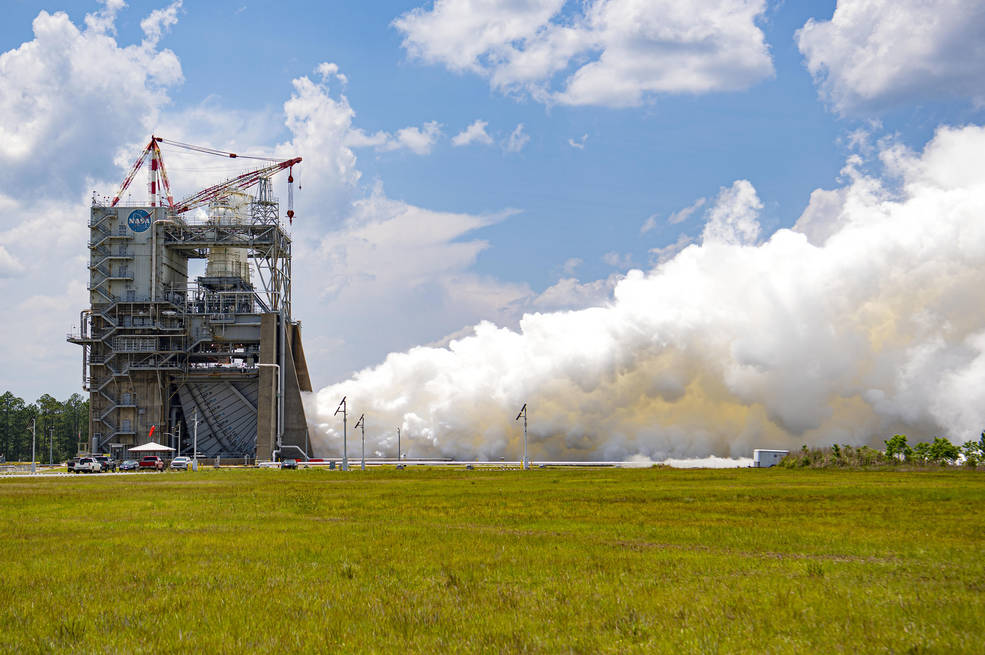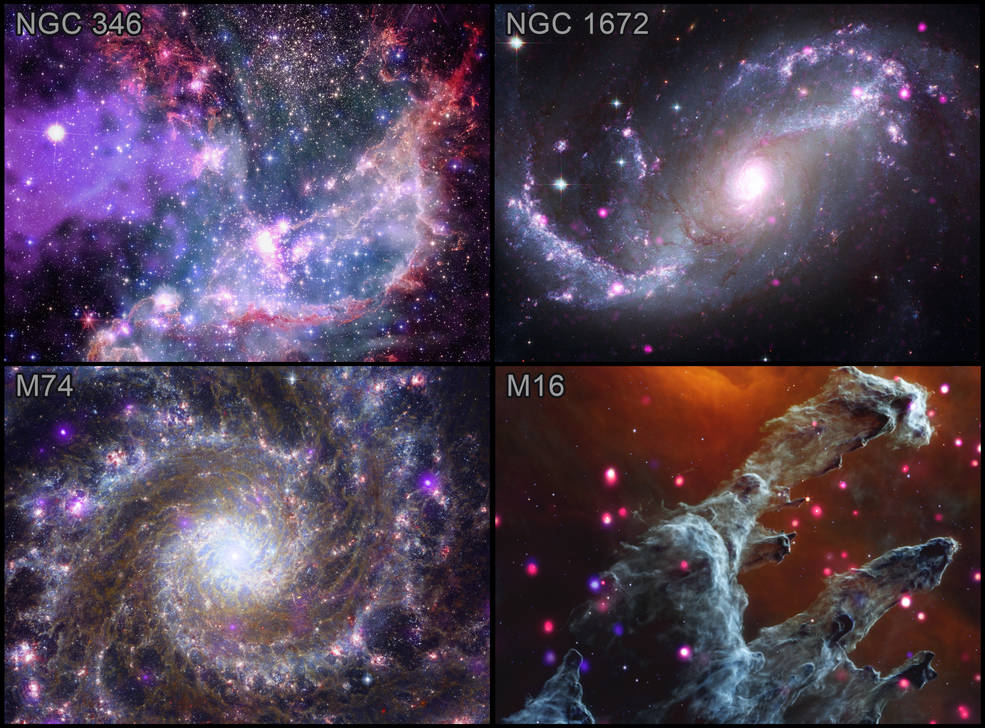The Marshall Star for May 24, 2023.
In This Week’s Star
- NASA Selects Blue Origin as Second Artemis Lunar Lander Provider
- NASA Selects Winners, Announces Final Phase of Space Food Challenge
- Dr. Kent Chojnacki Named Deputy Manager of HLS Program Office
- MAARS Group Helps Employees Find Sense of Belonging at Marshall
- Station Welcomes Axiom Astronauts, Preps for Next Cargo Mission
- NASA Continues Key Test Series with Moon Rocket Engine Hot Fire
- NASA’s Chandra, Webb Combine for Arresting Views
- Webb Finding in Rare Main Belt Comet Featured on ‘This Week at NASA’
NASA Selects Blue Origin as Second Artemis Lunar Lander Provider
To develop a human landing system for the agency’s Artemis V mission to the Moon, NASA has selected Blue Origin of Kent, Washington. Through Artemis, NASA will explore more of the Moon than ever before, uncovering more scientific discoveries, and preparing for future astronaut missions to Mars.
Blue Origin will design, develop, test, and verify its Blue Moon lander to meet NASA’s human landing system requirements for recurring astronaut expeditions to the lunar surface, including docking with Gateway, a space station where crew transfer in lunar orbit. In addition to design and development work, the contract includes one uncrewed demonstration mission to the lunar surface before a crewed demo on the Artemis V mission in 2029. The total award value of the firm-fixed price contract is $3.4 billion.
“Today we are excited to announce Blue Origin will build a human landing system as NASA’s second provider to deliver Artemis astronauts to the lunar surface,” NASA Administrator Bill Nelson said on May 19. “We are in a golden age of human spaceflight, which is made possible by NASA’s commercial and international partnerships. Together, we are making an investment in the infrastructure that will pave the way to land the first astronauts on Mars.”
For the Artemis V mission, NASA’s SLS (Space Launch System) rocket will launch four astronauts to lunar orbit aboard the Orion spacecraft. Once Orion docks with Gateway, two astronauts will transfer to Blue Origin’s human landing system for about a weeklong trip to the Moon’s South Pole region where they will conduct science and exploration activities. Artemis V is at the intersection of demonstrating NASA’s initial lunar exploration capabilities and establishing the foundational systems to support recurring complex missions in lunar orbit and on the surface as part of the agency’s Moon to Mars exploration approach.
Adding another human landing system partner to NASA’s Artemis program will increase competition, reduce costs to taxpayers, support a regular cadence of lunar landings, further invest in the lunar economy, and help NASA achieve its goals on and around the Moon in preparation for future astronaut missions to Mars.
The agency previously contracted SpaceX to demonstrate an initial human landing system for the Artemis III mission. Under that contract, the agency also directed SpaceX to evolve its design to meet the agency’s requirements for sustainable exploration and to demonstrate the lander on Artemis IV. As a result of the contract with Blue Origin to demonstrate on Artemis V a lander that meets these same sustainable lander requirements, including capabilities for increased crew size, longer mission duration, and delivery of more mass to the Moon, multiple providers will be available to compete for future opportunities to fulfill NASA’s lunar surface access needs for Artemis missions.
By supporting industry’s development of innovative human landing system concepts and designs, NASA will help increase access to space for the benefit of all.
“Having two distinct lunar lander designs, with different approaches to how they meet NASA’s mission needs, provides more robustness and ensures a regular cadence of Moon landings,” said Lisa Watson-Morgan, manager, Human Landing System Program at NASA’s Marshall Space Flight Center. “This competitive approach drives innovation, brings down costs, and invests in commercial capabilities to grow the business opportunities that can serve other customers and foster a lunar economy.”
NASA issued the solicitation, known as Appendix P, of its second Next Space Technologies for Exploration Partnerships Broad Agency Announcement (Next-STEP2 BAA), in September 2022 as part of the ongoing development of advanced space exploration technologies, capabilities, and concepts.
Through Artemis, NASA will send astronauts – including the first woman and first person of color – to explore the Moon for scientific discovery, economic benefits, and to build the foundation for crewed missions to Mars. Together, the SLS rocket, Orion, Gateway, advanced spacesuits, and human landing systems are NASA’s foundation for deep space exploration.
Go here for more information about the human landing system.
NASA Selects Winners, Announces Final Phase of Space Food Challenge
NASA has announced eight winning teams and awarded $750,000 in prizes in the second phase of the agency’s Deep Space Food Challenge. The winning teams will move on to compete in the third and final phase of the challenge.
As NASA prepares to send astronauts farther into the solar system than ever before, the agency needs food systems that can fortify future crews in deep space for years at a time. The Deep Space Food Challenge calls on solvers from around the world to create technologies to help feed astronauts on future long-term space missions.
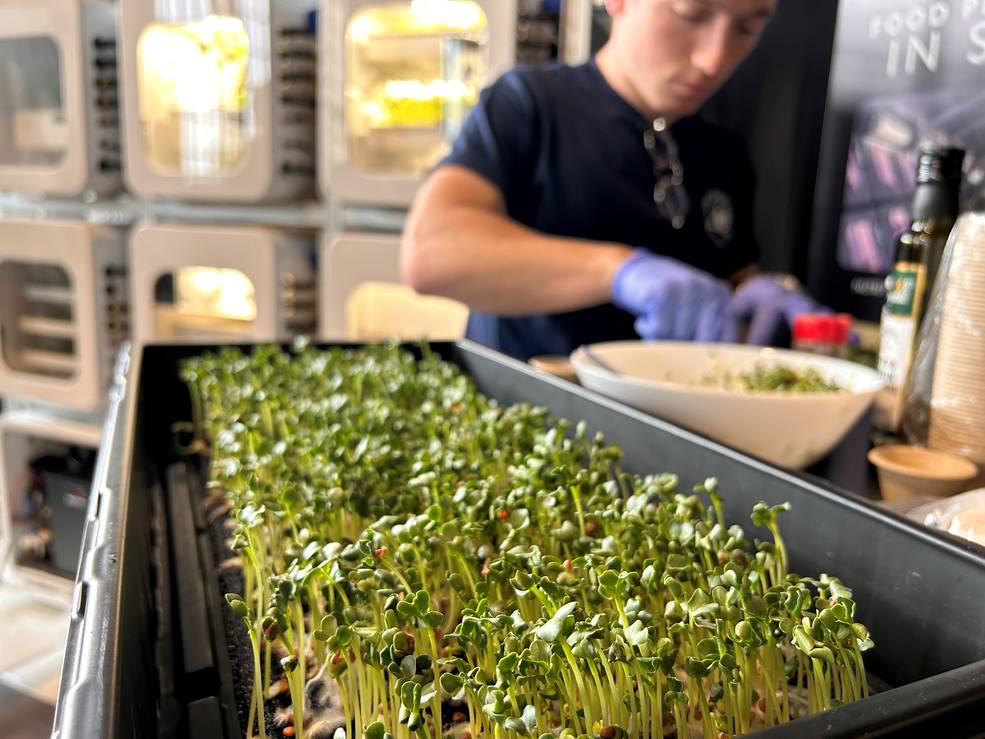
“These creative winning solutions come from teams made up of business, universities, and individual solvers, showcasing how NASA can benefit from everyone’s expertise to solve crucial challenges,” said Amy Kaminski, program executive for Prizes, Challenges, and Crowdsourcing in NASA’s Space Technology Mission Directorate (STMD) at NASA Headquarters. “We’re excited to announce Phase 3 of the challenge to see where these teams can take their technologies next.”
Phase 2 tasked dozens of teams with building and demonstrating small-scale prototypes of technologies that use minimal resources and create little waste while producing safe, healthy, and appetizing foods for astronauts. A panel of judges selected eight winners to build and demonstrate full-scale food technologies over the next year in Phase 3.
The following U.S. teams will each receive $150,000 in prizes from NASA and advance to compete for up to $1.5 million in total prizes from NASA in Phase 3:
- Air Company of Brooklyn, New York, developed a system and processes for turning air, water, electricity, and yeast into food.
- Interstellar Lab of Merritt Island, Florida, created a modular bioregenerative system for producing fresh microgreens, vegetables, mushrooms, and insects.
- Kernel Deltech USA of Cape Canaveral, Florida, developed a system for cultivating mushroom-based ingredients.
- Nolux of Riverside, California, created a solution that mimics the photosynthesis that happens in nature to produce plant- and mushroom-based ingredients.
- SATED (Safe Appliance, Tidy, Efficient, and Delicious) of Boulder, Colorado, developed a space cooking appliance that would allow astronauts to prepare a variety of meals from ingredients with long shelf lives.
NASA and CSA (Canadian Space Agency) also jointly selected three international teams as Phase 2 winners. These three teams are invited to advance their technologies in Phase 3:
- Enigma of the Cosmos of Melbourne, Australia, created an adaptive growing system to increase the efficiency of plants’ natural growth cycles.
- Mycorena of Gothenburg, Sweden, developed a system that uses a combination of microalgae and fungi to produce a microprotein.
- Solar Foods of Lappeenranta, Finland, created a system that uses gas fermentation to produce single-cell proteins.
“Astronauts will tell you that tasty and nutritious food is a critical part of any successful human space exploration mission,” said Denise Morris, program manager of NASA Centennial Challenges at NASA’s Marshall Space Flight Center. “The possibilities presented in this challenge could help sustain our explorers on future missions, and even have the potential to help out right here on Earth in areas where food is scarce or hard to produce.”
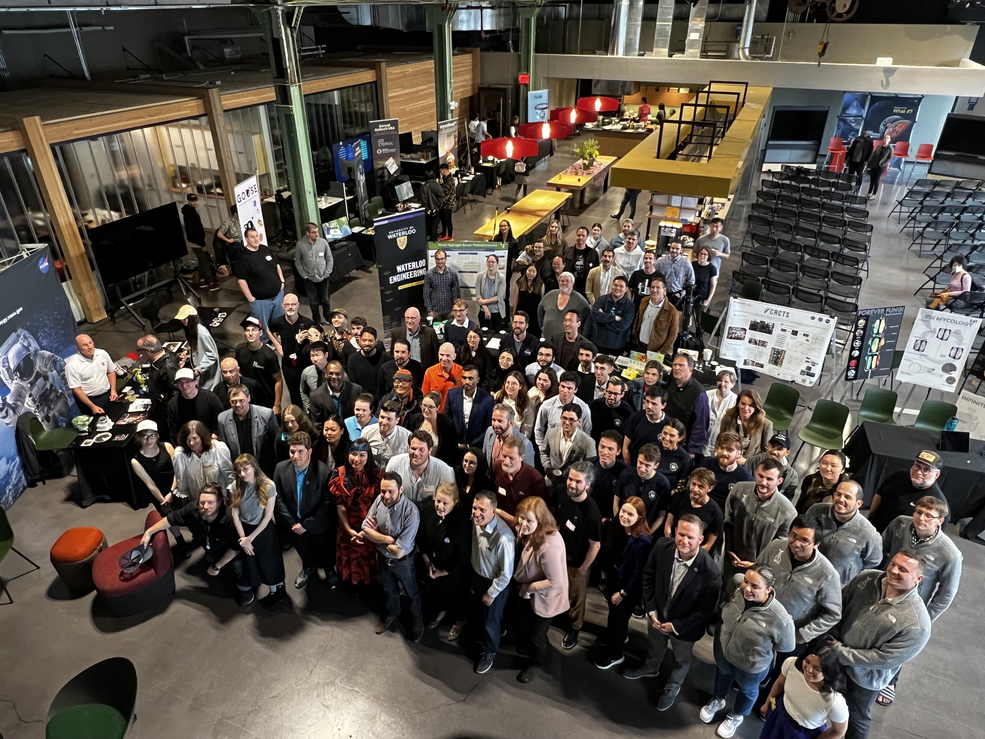
The competition is a first-of-its-kind collaboration between NASA and CSA. On April 27, CSA awarded prizes to the teams advancing to the final stage of the Canadian challenge, which runs in parallel with NASA’s.
The Deep Space Food Challenge is one of NASA’s Centennial Challenges, which are part of the Prizes, Challenges, and Crowdsourcing program within STMD. NASA Marshall manages Centennial Challenges. Subject matter experts at NASA’s Johnson Space Center and NASA’s Kennedy Space Center support the competition. NASA, in partnership with the Methuselah Foundation, manages the U.S. and international competitors.
Learn more about NASA’s Deep Space Food Challenge.
Dr. Kent Chojnacki Named Deputy Manager of HLS Program Office
Dr. Kent Chojnacki has been named to the position of deputy manager of the Human Landing System (HLS) Program Office at NASA’s Marshall Space Flight Center.
In his role, Chojnacki will assist in the management of the HLS Program Office in leading the development of integrated human lunar landing systems.
Since 2020, Chojnacki has been the HLS Systems Engineering and Integration manager. In that role, he led the efforts for all activities associated with the programmatic, fiscal, and technical planning, procurement, design, development, testing, evaluation, production, and operation of the human landing element, including support equipment and facilities.
Chojnacki has more than 25 years of experience in the design and development of advanced space transportation vehicles. Prior to joining the HLS Program, he served in positions of increasing responsibility for the SLS (Space Launch System) Program, including deputy chief engineer for the stages element, lead of the stages exploration upper stage, and associate manager of the SLS Stages Office.
He joined Marshall in 2000 as an aerospace engineer in the Vehicle Systems Development Department, performing systems engineering and integration on large development programs such as Gravity Probe B and the X-34 and X-43C demonstrator vehicles. From 2007 to 2011, he was the main propulsion system subsystem manager, integrated product team lead, and stage definition manager of the Ares Upper Stage Project. His honors include an Exceptional Service Award.
Chojnacki earned a bachelor’s degree in aeronautics and astronautics from the Massachusetts Institute of Technology and both a master’s and doctorate in mechanical engineering from the University of Alabama in Huntsville. He lives in Huntsville with his wife and children.
MAARS Group Helps Employees Find Sense of Belonging at Marshall
By Jessica Barnett
Building and maintaining a connection with others at work can be a key factor in one’s personal success, and NASA’s Marshall Space Flight Center’s growing array of employee resource groups, such as Marshall’s Asian American and Pacific Islanders ERG, known as MAARS, are here to help.
Lien Moore and Tony Kim co-chair MAARS, formerly called the AAPI Advisory Working Group.
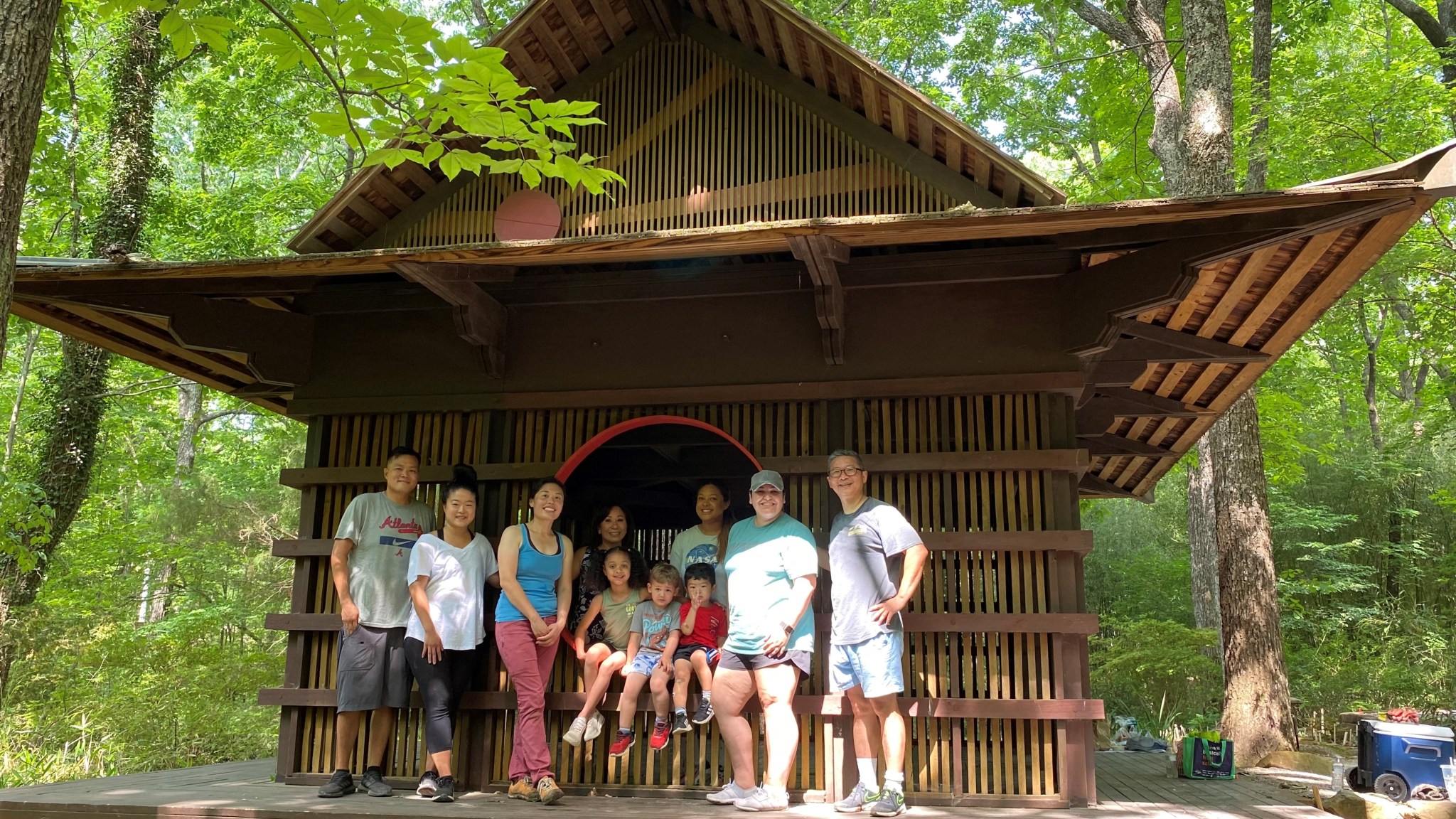
Their mission is to promote inclusion and connection while also helping employees achieve a sense of belonging at Marshall.
“We recognize the need as well as some of the challenges we’ve had and our desire to help new, younger employees who are like us and might experience some of the same things,” said Kim, who has worked with NASA since 1990 and currently serves as a project manager for SERVIR, a global network of regional partners dedicated to environmental management.
Kim said he knows what it’s like to feel underrepresented and racially stereotyped, whether it was for being good at math or being part of the “model minority,” a myth that Asians are inherently more successful, intelligent, and hard-working.
“There’s a lot of diversity in the Asian minority,” said Kim. “We’re very outgoing and fun, and there’s good, there’s bad – like any group of people.”
It’s one of the many reasons he’s grateful to work at a place like NASA, where he can help break that paradigm and showcase the diversity within the Asian American, Native Hawaiian, and Pacific Islander (AANHPI) communities.
During May’s AANHPI Heritage Month, MAARS co-hosted two events to help further that cause. The first was a panel featuring Dr. Mamoru Mohri, Kozo Matsuda, Tia Ferguson, and Hoot Gibson. Mohri is known for being the first Japanese astronaut to fly on the space shuttle, but lesser known is how his chance encounter with Matsuda shaped the future of Huntsville.
The other event was a 45-minute Q&A with Jeremy Shu-How Lin, one of the few Asian Americans to ever play in the NBA and the first to win an NBA championship.
These activities help promote the strength and resilience shown by the AANHPI community, even when they’re facing discrimination or unjust odds.
MAARS also hosts fireside chats, where members can connect with executives; outreach activities at Monte Sano State Park to help people reconnect post-Covid; monthly meetings with employee resource groups at other NASA centers; and monthly lunches.
“There were some during the pandemic who were really isolated,” Moore said. “I realized how important it was to get people engaged and really connecting with each other.”
Kim agrees. “We feel very fortunate that NASA has advanced us to the level where we can help other people and maybe help them be a little more successful,” he said.
By working together with Marshall leadership, MAARS and Marshall are poised to build legacy together by interacting with new hires, discussing challenges or concerns involving the AANHPI community, and engaging in recruitment and outreach activities.

“With the recent DEIA (Diversity, Equity, Inclusion & Acceptance) plan, we’ve been supporting and providing input from our ERG to the team at NASA Headquarters,” Moore said.
MAARS’ goal is to provide a supportive environment for members to connect, strengthen their leadership and communication skills, grow their network, and reach their potential. That is why the group is open to anyone who wants to participate and not exclusive to Marshall employees of AANHPI descent.
“We want to be focused on the togetherness and accomplishing a mission, working together, having that camaraderie between different people,” Kim said. “At some point, I would love for that legacy to say that we don’t look at the differences, we look at the commonality.”
Marshall team members can also join the MAARS chat on Teams or learn more about this ERG on its SharePoint page.
“We’re all going to need support sometime. We all need a sense of belonging,” Moore said. “Come join us for lunch as guest members, see how you like the group.”
Barnett, a Media Fusion employee, supports Marshall’s Office of Strategic Analysis & Communications.
Station Welcomes Axiom Astronauts, Preps for Next Cargo Mission
Eleven crew members are living aboard the International Space Station with four spaceships now docked to the orbiting lab. A fifth spaceship launched the morning of May 24 and was scheduled to arrive a few hours later with cargo to replenish the Expedition 69 crew.
Two SpaceX Dragon crew ships are docked adjacent to each other on the station’s Harmony module after the arrival of Axiom Mission-2 (Ax-2) aboard Dragon Freedom on May 22. The four private astronauts from Axiom Space opened Freedom’s hatch and entered the station beginning eight days of docked operations.
The private quartet consisting of commander Peggy Whitson, pilot John Shoffner, and mission specialists Al Alqarni and Rayyanah Barnawi spent May 23 getting familiar with station operations. They practiced preparing food and drinks, conducting hygiene practices, performing safety procedures, and operating lab equipment while getting used to living in space.
At the end of the day, the foursome joined the seven-member Expedition 69 crew and reviewed roles and responsibilities in the unlikely event of an emergency. The international crew of 11 located safety gear such as fire extinguishers and portable breathing gear, followed escape routes, and coordinated communications with mission controllers in response to fire, ammonia leak, or pressure leak events.
In the middle of the new crew adaptation activities, there was still time for ongoing space science and lab maintenance activities. NASA flight engineer Frank Rubio serviced a variety of components and swapped samples inside a research furnace and a fluorescence microscope. NASA flight engineer Woody Hoburg configured gear supporting a pharmaceutical study, while UAE (United Arab Emirates) astronaut Sultan Alneyadi set up the Stellar Stem Cells experiment, an Ax-2 investigation, that will explore regenerative medicine therapies.
NASA flight engineer Stephen Bowen spent his day with the Ax-2 crew and joined Commander Whitson transferring emergency gear and configuring safety hardware between Dragon Freedom and the space station. Bowen and former NASA astronaut Whitson are both Dragon crew ship commanders, with Bowen leading the SpaceX Crew-6 mission aboard the Dragon Endeavour spacecraft.
The uncrewed Roscosmos Progress 84 launched at 7:56 a.m. CDT on May 24 from the Baikonur Cosmodrome in Kazakhstan on a resupply mission to the space station. Progress will deliver about three tons of food, fuel, and supplies to the space station.
Learn more about station activities by following the space station blog, @space_station and @ISS_Research on Twitter, as well as the ISS Facebook and ISS Instagram accounts.
NASA Continues Key Test Series with Moon Rocket Engine Hot Fire
NASA completed a full duration hot fire of the RS-25 certification engine May 23, continuing a critical test series to support future SLS (Space Launch System) missions to deep space as NASA explores the secrets of the universe for the benefit of all. The test on the Fred Haise Test Stand at NASA’s Stennis Space Center marked the eighth in a 12-test certification series that will support production of RS-25 engines by lead engine contractor Aerojet Rocketdyne for future Artemis missions, beginning with Artemis V. Engineers fired the RS-25 engine for almost eight-and-a-half minutes (500 seconds), the same amount of time it must operate to help send astronauts in the Orion spacecraft to space. The engine operated up to the 113% power level during the test, beyond the required 111% needed to get SLS to orbit. The increased power provides engineers with a margin of operational safety during testing. Four RS-25 engines fire simultaneously to generate a combined 1.6 million pounds of thrust at launch and 2 million pounds of thrust during ascent to help power each SLS flight.NASA’s Marshall Space Flight Center manages the SLS Program. (NASA)
NASA’s Chandra, Webb Combine for Arresting Views
Four composite images deliver dazzling views from NASA’s Chandra X-ray Observatory and James Webb Space Telescope of two galaxies, a nebula, and a star cluster. Each image combines Chandra’s X-rays – a form of high-energy light – with infrared data from previously released Webb images, both of which are invisible to the unaided eye. Data from NASA’s Hubble Space Telescope (optical light) and retired Spitzer Space Telescope (infrared), plus the European Space Agency’s XMM-Newton (X-ray) and the European Southern Observatory’s New Technology Telescope (optical) is also used. These cosmic wonders and details are made available by mapping the data to colors that humans can perceive.
Beginning in the upper left and moving clockwise, the objects are:
NGC 346: NGC 346 is a star cluster in a nearby galaxy, the Small Magellanic Cloud, about 200,000 light-years from Earth. Webb shows plumes and arcs of gas and dust that stars and planets use as source material during their formation. The purple cloud on the left seen with Chandra is the remains of a supernova explosion from a massive star. The Chandra data also reveals young, hot, and massive stars that send powerful winds outward from their surfaces. Additional data from Hubble and Spitzer is included, along with supporting data from XMM-Newton and ESO’s New Technology Telescope. (X-ray: purple and blue; infrared/optical: red, green, blue)
NGC 1672: NGC 1672 is a spiral galaxy, but one that astronomers categorize as a “barred” spiral. In regions close to their centers, the arms of barred spiral galaxies are mostly in a straight band of stars across the center that encloses the core, as opposed to other spirals that have arms that twist all the way to their core. The Chandra data reveals compact objects like neutron stars or black holes pulling material from companion stars as well as the remnants of exploded stars. Additional data from Hubble (optical light) helps fill out the spiral arms with dust and gas, while Webb data shows dust and gas in the galaxy’s spiral arms. (X-ray: purple; optical: red, green, blue; infrared: red, green, blue)
M16 (Eagle Nebula): Messier 16, also known as the Eagle Nebula, is a famous region of the sky often referred to as the “Pillars of Creation.” The Webb image shows the dark columns of gas and dust shrouding the few remaining fledgling stars just being formed. The Chandra sources, which look like dots, are young stars that give off copious amounts of X-rays. (X-ray: red, blue; infrared: red, green, blue)
M74: Messier 74 is also a spiral galaxy – like our Milky Way – that we see face-on from our vantage point on Earth. It is about 32 million light-years away. Messier 74 is nicknamed the Phantom Galaxy because it is relatively dim, making it harder to spot with small telescopes than other galaxies in Charles Messier’s famous catalog from the 18th century. Webb outlines gas and dust in the infrared while Chandra data spotlights high-energy activity from stars at X-ray wavelengths. Hubble optical data showcases additional stars and dust along the dust lanes. (X-ray: purple; optical: orange, cyan, blue, infrared: green, yellow, red, magenta)
NASA’s Marshall Space Flight Center manages the Chandra program. The Smithsonian Astrophysical Observatory’s Chandra X-ray Center controls science operations from Cambridge, Massachusetts, and flight operations from Burlington, Massachusetts.
The James Webb Space Telescope is the world’s premier space science observatory. Webb will solve mysteries in our solar system, look beyond to distant worlds around other stars, and probe the mysterious structures and origins of our universe and our place in it. Webb is an international program led by NASA with its partners, ESA (European Space Agency) and the Canadian Space Agency.
Webb Finding in Rare Main Belt Comet Featured on ‘This Week at NASA’
Researchers have used NASA’s James Webb Space Telescope to confirm water vapor around a comet in the main asteroid belt – a rare so-called main belt comet – for the first time. The discovery is featured in “This Week @ NASA,” a weekly video program broadcast on NASA-TV and posted online.
This finding indicates water ice from the ancient solar system can be preserved in that region of space, which is closer to the Sun than where most comets are typically located. Now, researchers will try to figure out why, unlike other comets, this one had no detectable carbon dioxide.
Webb is an international program led by NASA with its partners, ESA (European Space Agency) and the Canadian Space Agency. Several NASA centers contributed to the project, including NASA’s Marshall Space Flight Center.
View this and previous episodes at “This Week @NASA” on NASA’s YouTube page.

























